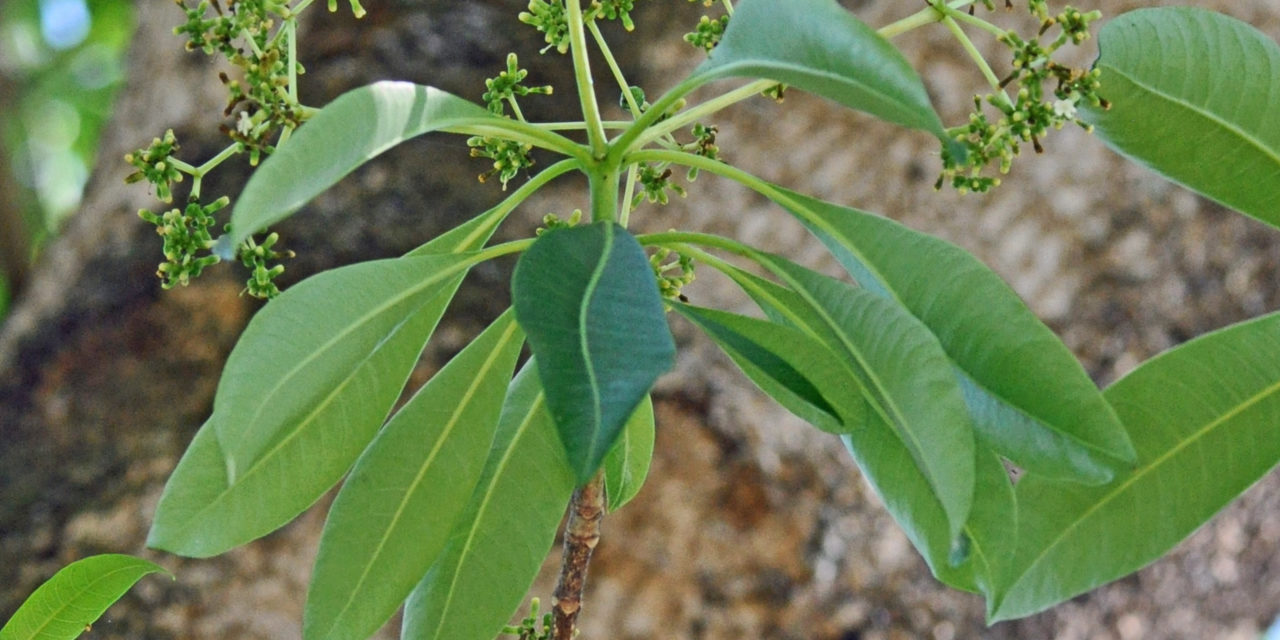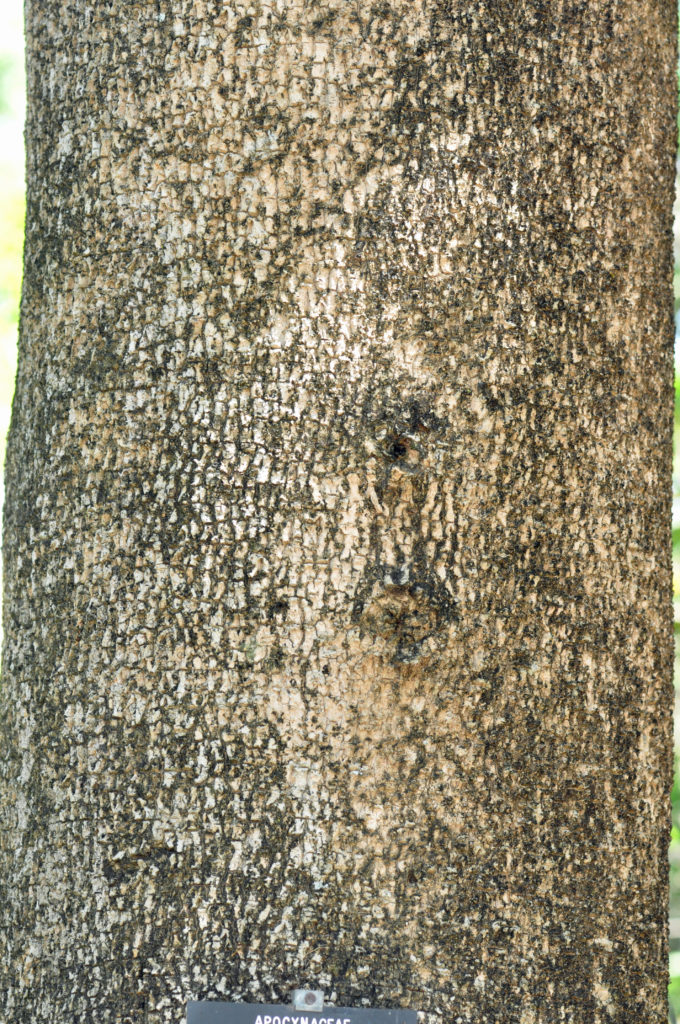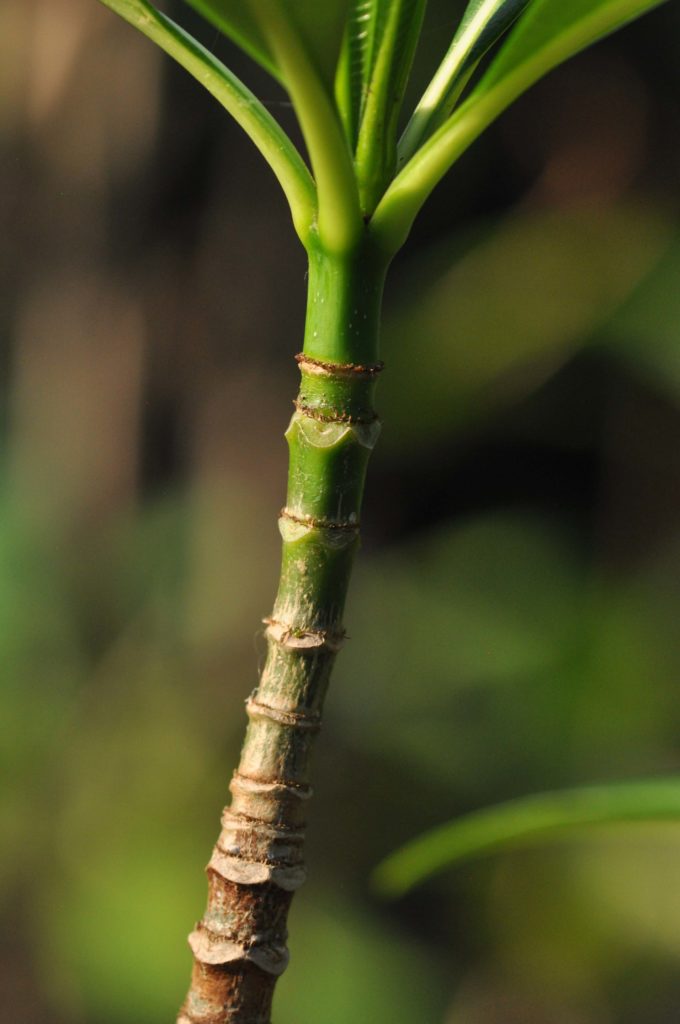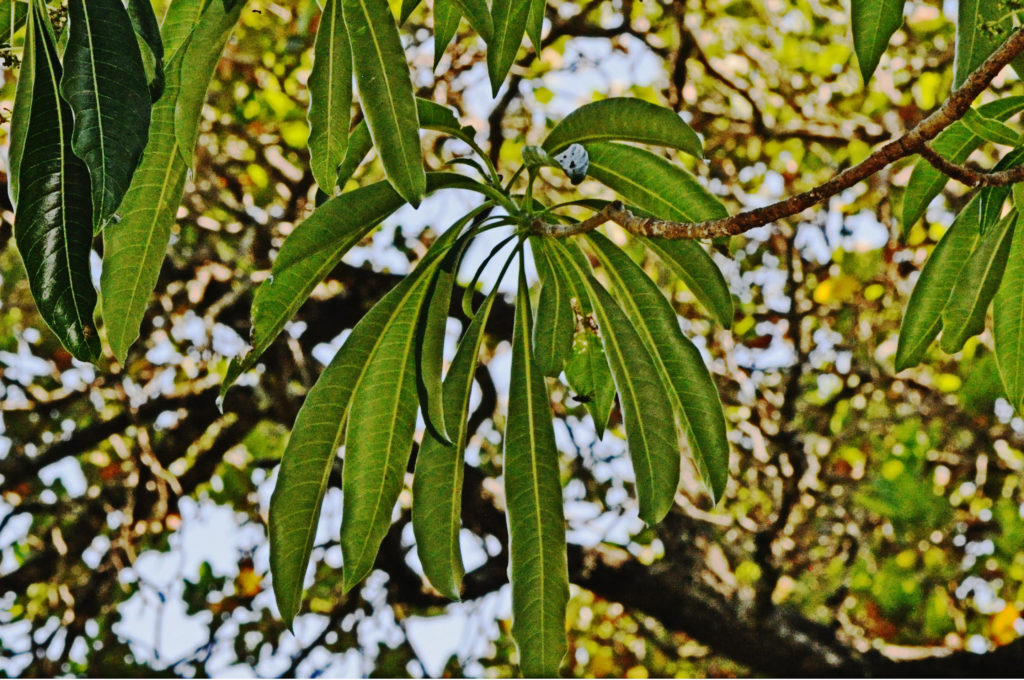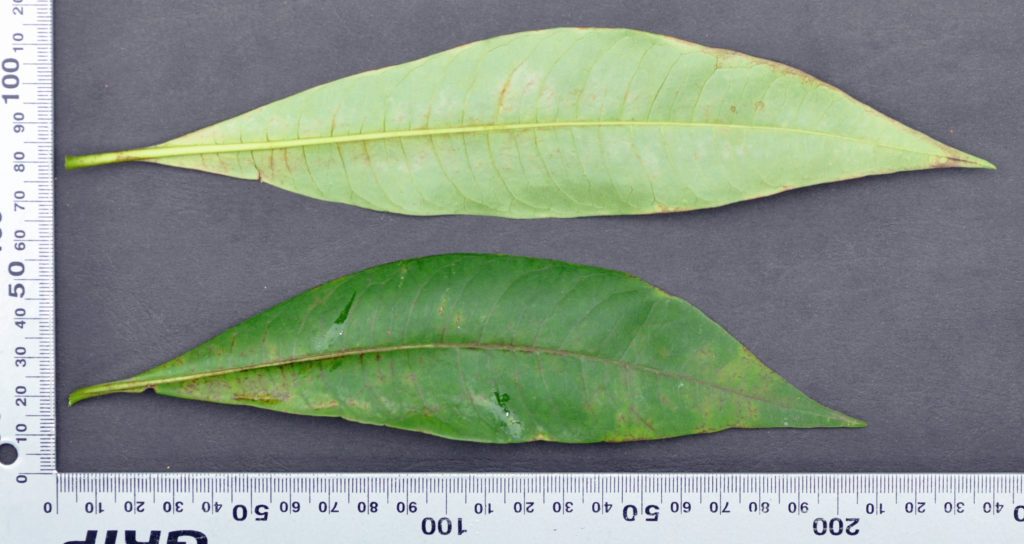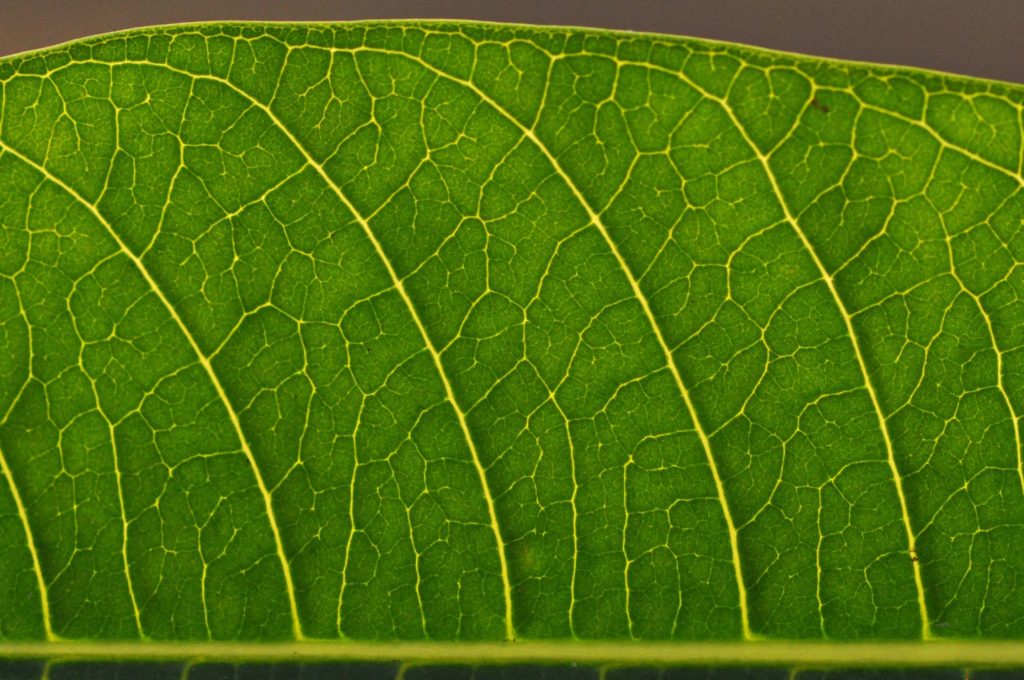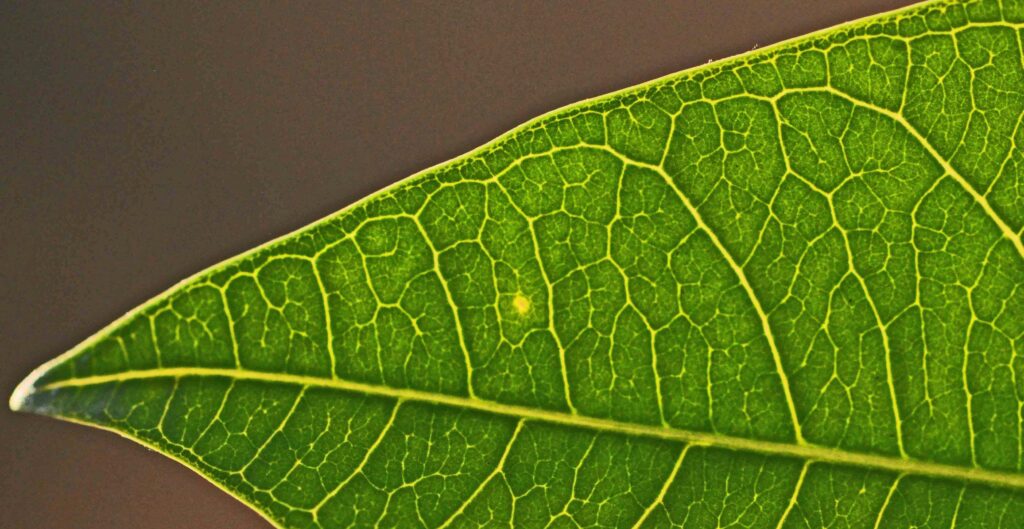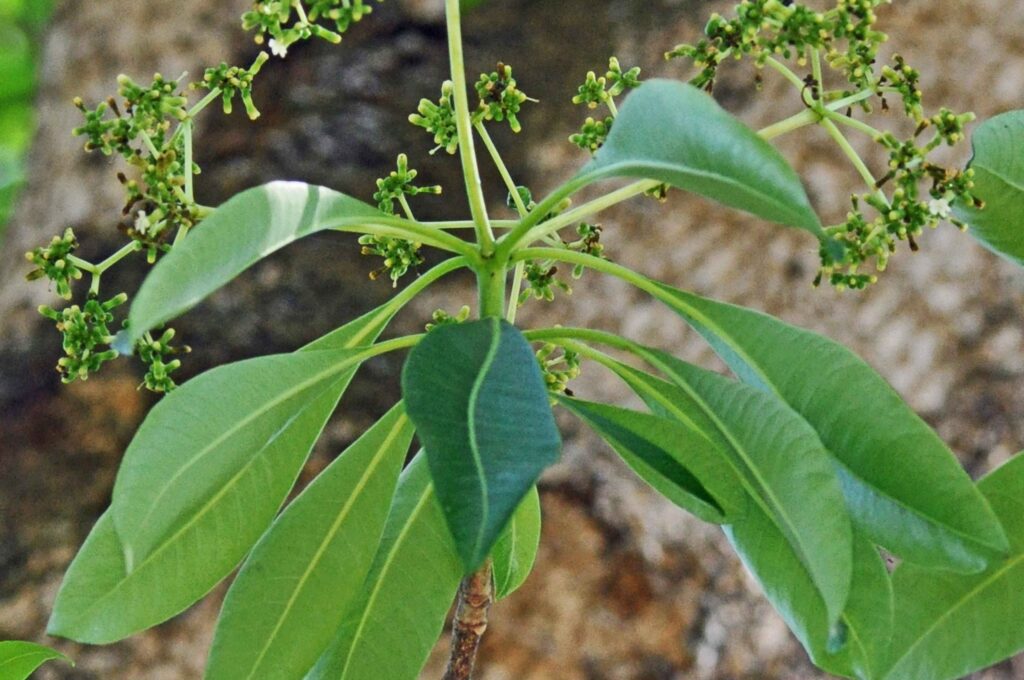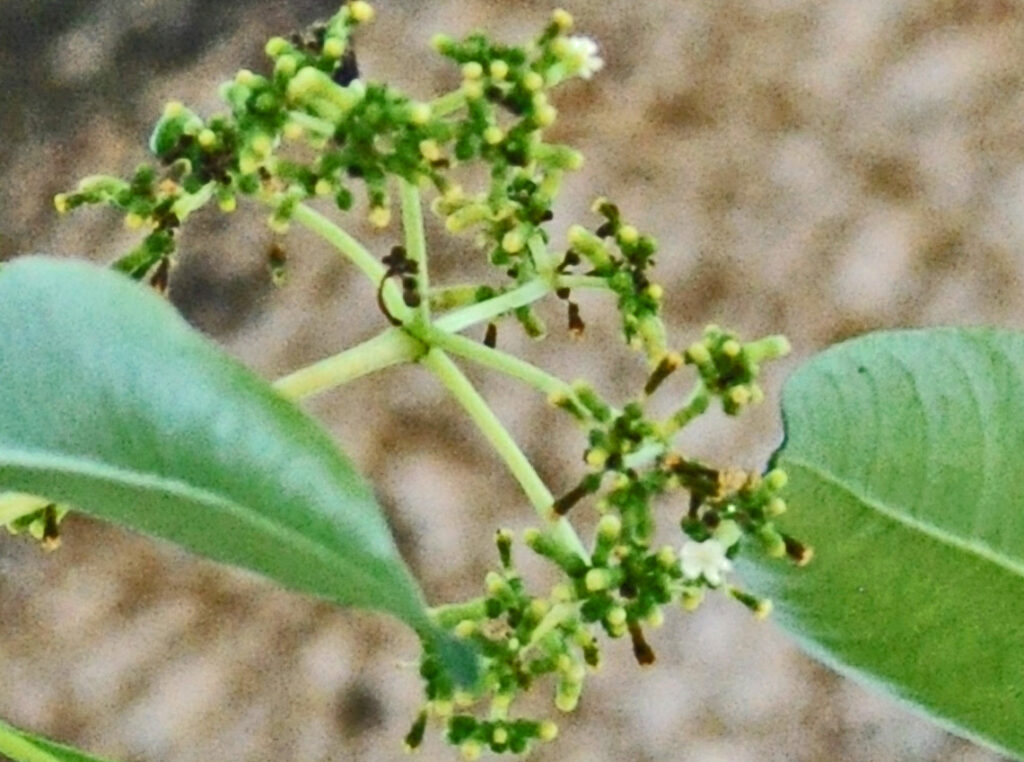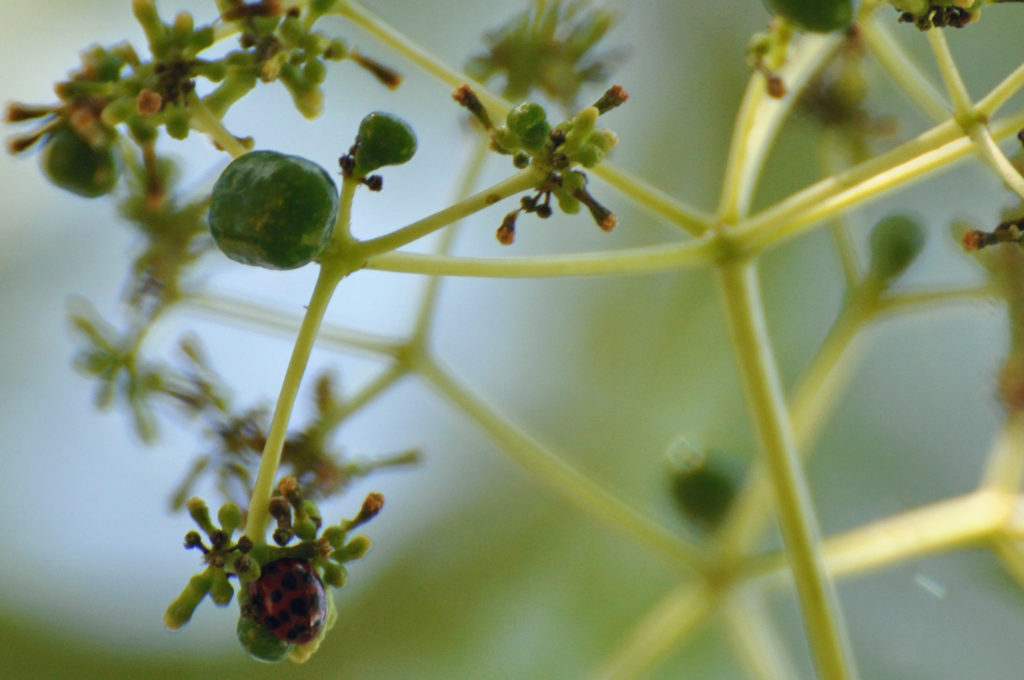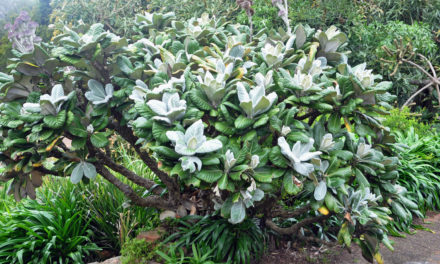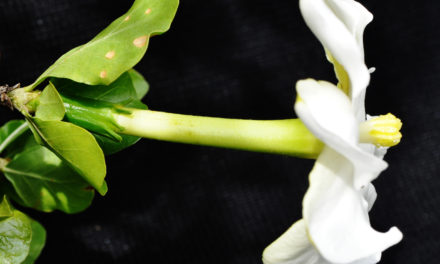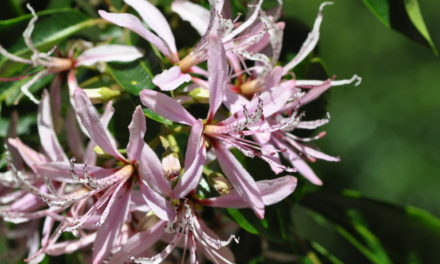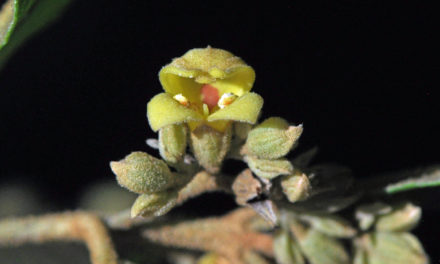General Info – summary
This graceful upright Tree with widespread milky sap is up to 35m high with a rounded crown. The simple, narrow, entire, drooping, and smooth Leaves have latex is present and lack stipules. The tiny white, 5-merous, regular Flowers are trumpet shaped & have single pistils. Drupaceous Fruit has 1 or 2 seeds. The fruit may be poisonous to man and dogs. No part of this tree is effective in treating malaria.
Description
Rauvolfia caffra
Previous Names: Rauvolfia caffra var. natalensis, Rauvolfia goetzei, Rauvolfia inebrians, Rauvolfia leucopoda, Rauvolfia macrophylla, Rauvolfia mayombensis, Rauvolfia natalensis, Rauvolfia obliquinervis, Rauvolfia ochrosioides, Rauvolfia oxyphylla, Rauvolfia tchibangensis, Rauvolfia verticillata, Rauvolfia welwitschii.
SA Tree No. 647.
Common names: (Afr) Kinaboon, Koorsboom, Waterboekenhout. (Eng) Quinine Tree. (isiXhosa) Umhlambamase, Umhlambamasi, Umjela, Umjele, Umjelo, Umthondisa, Umthundisa. (isiZulu) Umhlambamansi, Umhlambamanzi, Umhlambamaze, Umjela, Umkhadluvungu. (Northern Sotho) Monadi. (siSwati) Umkhamanmasi, Umfomamasi. (Setswana) Nshongo. (Tshivenda) Munadzi, Muraldi. (Xitsonga) Nchongo, Nxongo.
Family Apocynaceae (Oleander or impala lily: Adenium multiflorum family). This family includes the exotic genera Oleander and Plumeria (Frangipani). Indigenous genera containing trees on this site include Acokanthera, Adenium, Carissa, Rauvolfia and Tabernaemontana. Currently the family has 366 genera and in excess of 5 000 species. In South Africa, there are 90 genera and about 700 species. All have milky or clear sap. The simple, entire and pinnately veined Leaves are usually opposite and may have stipules situated between the petiole and the stem. The Inflorescence is usually a cyme (a broad, more or less flat-topped, determinate flower cluster, with central flowers opening first). The regular and bisexual Flowers are usually bracteate. The Calyx has 4-5, usually free sepals and the 4-5 Petals are joined – at least at the base of the staminal column. A corona (an extension) is often present either on the corolla or arising from the base of the staminal column. The 4-5 Stamens are variously located and have anthers with 2 pollen sacs. The superior to half-inferior Ovary has 2 carpels. Fruit is various. The often-compressed Seeds may have a tuft of silky hair at the micropylar end. The micropyle (a small opening in the surface of an ovule, through which the pollen tube penetrates is often visible as a small pore in the ripe seed. During germination, the seedling’s radicle – embryonic root – emerges through the micropyle).
Name derivation: Rauvolfia – after a Leonhart Rauwolf (1533-1596) – German scientist with an interest in Botany. He spent time in the East. caffra – of the Eastern Cape. This is the only species of this Genus indigenous in the southern Africa. About 60 species occur elsewhere in the world.
Conservation: National Status: LC. (Least Concern). Assessed: 2005 (W. Foden and L.Potter).
Tree
With its spreading, rounded crown, this impressive straight Tree may reach 35m high – usually shorter and 6-20m – especially outside forests. Here it has a rounded crown. The single Trunk has a diameter of up to 1,5m but is usually up to half this. The trunk is slender and straight. The lower branches fall and it becomes much branched near the top. The base may be slightly buttressed. The Bark is cream, grey to dark brown. It may be rough, smooth or corky. When growing away from the coast it may become thickly corky and cracked into small nearly rectangle shapes (photo 802). It may have a distinctively rippled appearance closer to the sea. The initially green, small hairless, slender, flexible and smooth Branches become yellowish brown (photo 123). They contain milky latex, are 4-5 angled or winged and have conspicuous leaf scars (photo 123). In this photo, the initially green young branches are visible. Lenticels (usually raised corky oval or elongated areas on the plant that allow the uncontrolled interchange of gases with the environment) may be visible (photo 123). All parts of this tree have abundant bitter milky sap/latex present.
- 802 2014.09.15 Lowveld NBG. Photo: David Becking.
- 123 2019.08.12 Skukuza KNP nursery. Photo: David Becking.
Leaves
The smooth, drooping and relatively narrow Leaves (photo 803) are simple (have a single blade, which may have incisions that are not deep enough to divide the blade into leaflets). The tree is evergreen or briefly deciduous. Leaves are 3-6 whorled and crowded near the ends of the branches. Leaves are narrowly obovate, elliptic or lance shaped and up to 28cm x 6cm (usually less). The distinct Midrib is pale yellow, indented above, protrudes below (photo 450) and reaches the leaf apex (photo 122). There are 12-30 pairs of regularly spaced, ‘parallel’ lateral veins, which start almost at right angles to the midrib (photo 121). From there they arch towards the leaf apex. Leaf Veins are translucent and are best viewed against a strong light (photo 121 & 122). Here a hand lens will help. The Apex (photos 803 & 122) is tapering to attenuate (showing a long gradual taper). The Petiole (leaf stalk) is up to 5cm long (photo 805M – under Flowers). The narrowly tapering Base is decurrent (leaf blades that partly wrap or have wings around the stem or petiole – photo 450). The leaf Blade is thinly leathery, glossy bright green above and a dull lighter green below (photo 450). The Margin is entire (with a continuous margin, not in any way indented). Numerous minute glands in the leaf axils form a small dense fringe. Stipules (basal appendage of the petiole) are absent.
- 803 2014.09.15 Lowveld NBG. Photo: David Becking.
- 450 2014.12.09 Walter Sisulu NBG. Photo: David Becking.
- 121 2019.08.12 Skukuza Nursery. Photo: David Becking.
- 122 2019.08.12 Skukuza Nursery. Photo: David Becking.
Flowers
The tiny, sweetly scented, white Flowers (photo 805M) are up to 4 x 2mm. Floral parts are pentamerous (5-merous, the parts in 5’s or multiples of 5). These trumpet-shaped flowers are borne at the end of branches in up to 20cm wide Cymes (dense clusters in sprays that are branched and re-branched – photo 805R1). The small and trumpet shaped flowers are actinomorphic (Regular, symmetrical. Flowers are vertically divisible into similar halves by more than 1 plane passing through the axis). The Calyx has 5 small Sepals lobes that are uneven and divided almost to the base or joined to form a shallow cup. The plate shaped Corolla has 5 fused Petals at the base that form a cylindrical tube that is thickened around the mouth. The throat has dense whitish hairs. The small petal lobes overlap to the left. The 5 Stamens are attached above the centre of the corolla tube and alternate with the corolla lobes. The terete (circular in cross section) Filaments are short and the 4-locular Anthers are shortly 2-lobed at the base. There is a single Pistil (a unit of the Gynoecium, the female element of the flower, composed of the Ovary, Style and a capitate Stigma – formed like a head) and the superior Ovary has 2 Ovules in each of the 2 Locules (chambers within the ovary). (Jul-Oct+.. Feb)
- 805M 2014.09.15 Lowveld NBG. Photo: David Becking.
- 805R1 2014.09.15 Lowveld NBG. Photo: David Becking.
Fruit
The fleshy Fruit is drupaceous – like a drupe. In a ripe Drupe, the Pericarp is that part of the fruit formed from the wall of the ripened ovary and not from the Testa – seed coat. Like a peach, it is made up of the Exocarp (thin skin) the Mesocarp (fleshy part) and the Endocarp (the hard innermost layer surrounding the seed). It becomes dry and dehiscent and when mature – splitting into 1 or 2 carpels (female reproductive organ with an ovary, stigma and usually a style). The fruit (photo 810) is about 1,5cm in diameter often-in slightly long pairs or may be single and almost spherical. They are initially smooth and shiny dark green with white spots – becoming black and wrinkled when mature. It takes up to 10 months for the fruit to ripen and 1 or 2 oval Seeds are produced in each fruit. (Oct-Mar).
- 810 2014.09.15 Lowveld NBG. Photo: David Becking.
Distribution & Ecology
These plants are common in forest, forest margins and on stream banks – usually below an altitude of 1 400m. They also occur in evergreen forest margins and open woodland – where the trees are shorter and wider spreading. The presence of these trees is considered an indicator of subterranean water. They may grow in deep soil – away from surface water. A bitter milky latex is present. This is an important diagnostic feature because the leaves are upright and there is no milky latex in the similar plant: Breonadia salicina (in the family Rubiaceae). Provincially Rauvolfia caffra occurs naturally in the Western Cape (southeast), Eastern Cape, KwaZulu-Natal, Mpumalanga, Gauteng, North West and Limpopo. Trees are also located in Swaziland, Mozambique, Zimbabwe, and northwards into tropical Africa. Wasps, butterflies and bees visit the flowers. It is the larval food plant for the Oleander hawk moth (Daphnis nerii). This impressive moth is a migratory species. The adults feed on nectar and flowers – usually close to sunset, whereas the larvae feed on leaves. Monkeys, bushbabies and many birds – including Bulbuls, Barbets and Hornbills eat the Fruit. Game browse the Leaves.
Ethnobotany
This makes a good street tree. The Wood has a relatively low density (about 540kg per cubic metre at 15% water content). This is slightly more than half that of and indicates that it will easily float in water). The wood is whitish or pale brown with a featureless grain and used for making fruit boxes, drums, general carpentry and kitchen utensils. Root bark contains reserpine, which is a rauwolfia alkaloid. It works by decreasing the amounts of certain chemicals in the brain (e.g. norepinephrine, serotonin), which helps to lower blood pressure and decrease agitation in patients who have certain mental problems. This somewhat frost sensitive tree is an attractive garden subject, but the roots are invasive and should be planted well clear of buildings. In spite of earlier belief and the common name (Quinine Tree), there is no Quinine in this tree. Tree extracts have proved to be ineffective in the treatment of malaria, but a large number of other indole alkaloids do occur. Parts of the tree are poisonous to man. The tree is widely used in local medicine. Propagation is by seeds, and these develop quickly. The fruit may be poisonous to man and dogs.
References
Boon, R. 2010. Pooley’s Trees of eastern South Africa. Flora and Fauna Publications Trust, Durban.
Burrows, J.E., Burrows, S.M., Lotter, M.C. & Schmidt, E. 2018. Trees and Shrubs Mozambique. Publishing Print Matters (Pty) Ltd. Noordhoek, Cape Town.
Foden, W. & Potter, L. 2005. Rauvolfia caffra Sond. National Assessment: Red List of South African Plants version 2020.1. Accessed on 2023/11/07.
Ginn, P.J. McIlleron, W.G. Milstein, S. 1989. The Complete Book of Southern African Birds. Struik Publishers (PTY) LTD. Third impression 1991.
Coates Palgrave, M. 2002. Keith Coates Palgrave Trees of Southern Africa. edn 3. Struik, Cape Town.
Lawrence, G. H. M, 1951. Taxonomy of Vascular Plants. The Macmillan Company, New York. Tenth Printing 1965.
Palmer, E. & Pitman, N. 1972. Trees of southern Africa. Balkema, Amsterdam, Cape Town.
Schmidt, S. Lotter, M. & McCleland, W. 2002. Trees and Shrubs of Mpumalanga and the Kruger National Park. Jacana, Johannesburg.
van Wyk, B. & van Wyk, P. 1997. Field guide to Trees of Southern Africa. Struik, Cape Town.
https://en.wikipedia.org/wiki/Apocynaceae
http://plantzafrica.com/plantqrs/rauvolfiacaffra.htm
http://worldagroforestry.org/treedb/AFTPDFS/Rauvolfia_caffra.PDF
http://www.mozambiqueflora.com.
https://en.wikipedia.org/wiki/Leonhard_Rauwolf
http://posa.sanbi.org/flora/browse.php?src=SP

